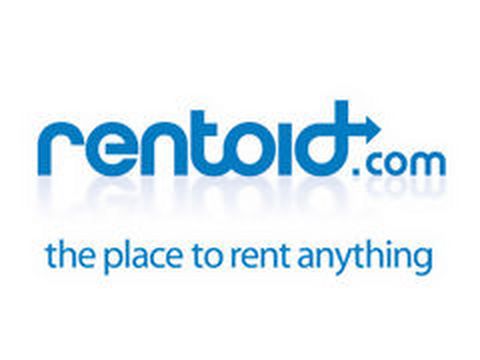List
Story > NEWS > Detail
[Seoul News] What is collaborative consumption?
Cooperative consumption provides a P2P market for sharing idle resources and, in a macroscopic sense, is part of a "shared economy." The core of collaborative consumption lies in sharing and uses Internet platforms as a medium to make it more convenient for consumers to exchange information, creating a point-to-point convergence of supply and demand. This allows resources to benefit from each other and realize sharing. It encourages more efficient use of resources through a pattern of collaborative consumption and increases productivity while also reducing pollution.
This has become widely known and received much attention from academia as it is recognized as a sustainable kind of consumption pattern. However, studies on collaborative consumption have yet to come up with an integrated definition in academia, as they are only in the search stage. At the same time, collaborative consumption will change the focus of the consumer sector from product ownership to product use rights. Consumers can obtain temporary use rights for goods on demand without having to purchase them. Collaborative consumption can be seen as a pattern of consumption in which resources can be managed in an integrated manner to receive a constant return from them. This allows consumers to get away from the bondage of ownership and have the right to use goods at low cost depending on demand. They also get to know more people through mutual interaction and contact, which makes them more comfortable to integrate into society. This pattern of consumption brings more social effects and benefits to people, facilitating the completion and distribution of goods, which enable the utilization of goods neglected due to overcapacity and overconsumption. This is an eco-friendly consumption pattern that increases the utilization of products to reduce waste of resources. Based on the study presented above, collaborative consumption is the use of an Internet platform to manage idle and distributed labor in an integrated manner, and to share all types and intangible resources (including goods, knowledge, time, space, funds, services, etc.) through sharing, exchange, bartering and leasing. In addition, it is reasonable to define collaborative consumption as a new socio-economic form in which it is possible to receive a certain price for the purpose of cooperating to realize benefits.
The types of collaborative consumption have been largely divided into three categories: Bostsman & Rogers (2010).

Collaborative consumption patterns around the world have been divided and the first is the product service system. This is based on the new concept of 'use' and requires paying a fixed fee for the right to use the product and not including ownership of the product. Product service systems extend the use of a product through recycling to make the most of its value. Consumers do not need to purchase ownership of a product to meet the temporary demand by obtaining a limited share of resources through a certain cost payment. This relieves the additional burden of the product (e.g., storage space costs, repair maintenance costs, insurance costs, etc.). Product service systems can be used to realize the sharing of products provided by each single flat form. Examples include car rental (panda app), P2P expression sharing, and personal items rental (Zilok, Rentoid, and Relay Rides) shared by others. P2P is a platform that can share and rent digital resources. The platform allows consumers to easily find out what they need out of many products to meet their temporary needs.

Singapore's Rent-a-Toy is a platform that allows children to rent expensive, quality toys or clothes to homes they need. For example, car2go, Uber, Didi run, new state car, panda tagging, and YIDAO app. An example of the head of a product service system is a shared car.
The second is the redistribution market, which mainly collects used or discarded goods through SNS Internet platforms and distributes them to those in need. Some examples include Free Cycle (on-line used goods distribution platform), Barter Quest (personal consumer trading platform), eBay (large general market and global electronic commerce platform), and Craigslist (pro market focused on electronic product use). Other used items such as cosmetics, accessories, clothing, books, toys, game consoles, children's clothing and DVDs may also be interchangeable with others. For example, three-up used children's clothing trading platforms, Makeup Alley Internet Beauty SNS and online merchandise trading sites. Most transactions on these platforms are anonymous transactions made among strangers. This encourages people to recycle and sell used goods, reducing waste of resources. "Hey, Neighbor!" links the resources of people living in a particular area to help them share resources.
Third is the collaborative lifestyle. Consumers who are well matched can share and exchange intangible assets with each other. For example, time, space, function, money, etc. Among them are Sandbox Suites (Citizen Space, Hub Culture), Brooklyn Skill share and Park At My House, P2P Financial Services Platform (Zopa, Prosper, Lending Club), Travel Resource Sharing, and Airbnb.

This collaborative lifestyle is more concentrated in the trading sector, not in the distribution sector of real products. Most transactions have been made between strangers and require high credit. From this, people can become closer and promote relationships. Together, the three types presented above promote the full development of collaborative consumption. Although there are areas that are not clearly divided and overlap each other, this will enable scholars to have a better overall understanding of collaborative consumption in future research and will help with collaborative consumption-related research.
Cooperative consumption provides a P2P market for sharing idle resources and, in a macroscopic sense, is part of a "shared economy." The core of collaborative consumption lies in sharing and uses Internet platforms as a medium to make it more convenient for consumers to exchange information, creating a point-to-point convergence of supply and demand. This allows resources to benefit from each other and realize sharing. It encourages more efficient use of resources through a pattern of collaborative consumption and increases productivity while also reducing pollution.
This has become widely known and received much attention from academia as it is recognized as a sustainable kind of consumption pattern. However, studies on collaborative consumption have yet to come up with an integrated definition in academia, as they are only in the search stage. At the same time, collaborative consumption will change the focus of the consumer sector from product ownership to product use rights. Consumers can obtain temporary use rights for goods on demand without having to purchase them. Collaborative consumption can be seen as a pattern of consumption in which resources can be managed in an integrated manner to receive a constant return from them. This allows consumers to get away from the bondage of ownership and have the right to use goods at low cost depending on demand. They also get to know more people through mutual interaction and contact, which makes them more comfortable to integrate into society. This pattern of consumption brings more social effects and benefits to people, facilitating the completion and distribution of goods, which enable the utilization of goods neglected due to overcapacity and overconsumption. This is an eco-friendly consumption pattern that increases the utilization of products to reduce waste of resources. Based on the study presented above, collaborative consumption is the use of an Internet platform to manage idle and distributed labor in an integrated manner, and to share all types and intangible resources (including goods, knowledge, time, space, funds, services, etc.) through sharing, exchange, bartering and leasing. In addition, it is reasonable to define collaborative consumption as a new socio-economic form in which it is possible to receive a certain price for the purpose of cooperating to realize benefits.
The types of collaborative consumption have been largely divided into three categories: Bostsman & Rogers (2010).

Collaborative consumption patterns around the world have been divided and the first is the product service system. This is based on the new concept of 'use' and requires paying a fixed fee for the right to use the product and not including ownership of the product. Product service systems extend the use of a product through recycling to make the most of its value. Consumers do not need to purchase ownership of a product to meet the temporary demand by obtaining a limited share of resources through a certain cost payment. This relieves the additional burden of the product (e.g., storage space costs, repair maintenance costs, insurance costs, etc.). Product service systems can be used to realize the sharing of products provided by each single flat form. Examples include car rental (panda app), P2P expression sharing, and personal items rental (Zilok, Rentoid, and Relay Rides) shared by others. P2P is a platform that can share and rent digital resources. The platform allows consumers to easily find out what they need out of many products to meet their temporary needs.

Singapore's Rent-a-Toy is a platform that allows children to rent expensive, quality toys or clothes to homes they need. For example, car2go, Uber, Didi run, new state car, panda tagging, and YIDAO app. An example of the head of a product service system is a shared car.
The second is the redistribution market, which mainly collects used or discarded goods through SNS Internet platforms and distributes them to those in need. Some examples include Free Cycle (on-line used goods distribution platform), Barter Quest (personal consumer trading platform), eBay (large general market and global electronic commerce platform), and Craigslist (pro market focused on electronic product use). Other used items such as cosmetics, accessories, clothing, books, toys, game consoles, children's clothing and DVDs may also be interchangeable with others. For example, three-up used children's clothing trading platforms, Makeup Alley Internet Beauty SNS and online merchandise trading sites. Most transactions on these platforms are anonymous transactions made among strangers. This encourages people to recycle and sell used goods, reducing waste of resources. "Hey, Neighbor!" links the resources of people living in a particular area to help them share resources.
Third is the collaborative lifestyle. Consumers who are well matched can share and exchange intangible assets with each other. For example, time, space, function, money, etc. Among them are Sandbox Suites (Citizen Space, Hub Culture), Brooklyn Skill share and Park At My House, P2P Financial Services Platform (Zopa, Prosper, Lending Club), Travel Resource Sharing, and Airbnb.

This collaborative lifestyle is more concentrated in the trading sector, not in the distribution sector of real products. Most transactions have been made between strangers and require high credit. From this, people can become closer and promote relationships. Together, the three types presented above promote the full development of collaborative consumption. Although there are areas that are not clearly divided and overlap each other, this will enable scholars to have a better overall understanding of collaborative consumption in future research and will help with collaborative consumption-related research.



